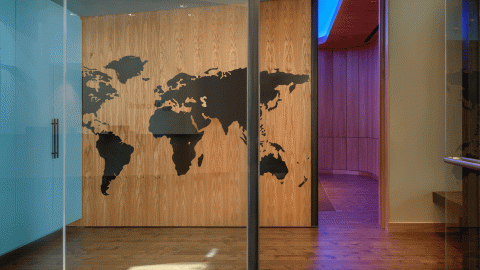Need some weekend reading? Catch up with these essential stories from Microsoft On the Issues
As the first quarter of 2021 draws to a close, you could be forgiven for feeling like time is behaving a little strangely this year. Is it racing ahead? Or perhaps it feels like it’s crawling.
Adjusting to life in the shadow of the pandemic has been a challenge for billions of people all over the world. Whatever it is that’s dominated your year so far, there’s no doubt it’s been hard to keep up with everything that’s going on in the world.
So we’ve gathered some of the most popular items from On the Issues so far this year.

Microsoft employees flying with Alaska Airlines are now doing so with a lighter impact on the environment. That’s because the flights they take between Alaska, California and Washington are powered by sustainable aviation fuel.
The fuel is made from waste oils and agricultural residues and can even be produced by capturing carbon from the air itself. Compared with traditional methods, sustainable aviation fuel can reduce planes’ carbon emissions by around 75%.
[READ MORE: Five fast facts: Australia’s model to strengthen news and journalism]

Two billion people get their fresh water from the glaciers of the Hindu Kush Himalayan region. Many more eat food grown on land that was irrigated with the area’s glacial meltwater. But climate change is causing glaciers to melt more rapidly and shrink, and the consequences could be dramatic if nothing is done – ranging from catastrophic floods to devastating droughts.
This precious resource is now being monitored by a coalition of experts. The University of Wisconsin, the Quebec AI Institute (Mila) and Microsoft’s AI for Good Research Lab are working with the International Centre for Integrated Mountain Development to track glacial change. Thanks to open data, this collaboration is delivering accurate analyses in a fraction of the time they used to take.
Read the full story or watch this short video on how this sharing of open data is helping to address the extent of glacial shrinkage and its potential consequences.
[READ MORE: How sharing data is helping fight the spread of Covid-19 in the UK]

In January 2020, Microsoft announced that it will be carbon negative by 2030.
The company’s first Environmental Sustainability Report provided an update at the start of this year. So far, Microsoft has reduced emissions by over 730,000 metric tons and eliminated 1.3 million metric tons of carbon from its operations altogether. It’s not just carbon that’s a focus of these green efforts. Reducing water use and the amount of waste created are also priorities, alongside protecting our ecosystems. This video provides more highlights from the sustainability report.
[READ MORE: Digital good: What it is and how to have more of it in your online life]

Digital technologies are transforming industry sectors and jobs all over the world. They can do the same for charities and nonprofits. But sometimes the tools they need are out of reach for nonprofits because they are too complex or too costly. With the launch of Cloud for Nonprofits, Microsoft hopes to put the power and flexibility of technology into the philanthropic sector.
In a Q&A from February, Justin Spelhaug, who leads Tech for Social Impact at Microsoft, explains how bringing together Microsoft 365, Power Platform, Dynamics 365, Azure and LinkedIn is helping nonprofits with engagement and fundraising, staff collaboration, and program design and delivery.








